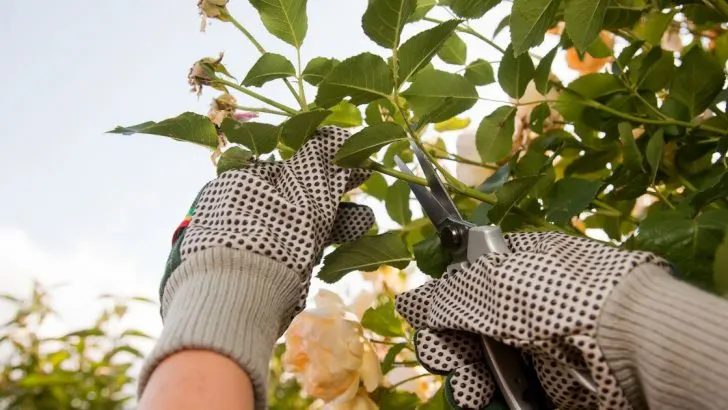Roses, with their breathtaking beauty and intoxicating fragrance, have earned a top spot as one of the most cherished plants in gardens worldwide.
Whether climbing, shrub, or tea roses, there’s a variety to suit every garden, bringing stunning blooms and lush greenery into any outdoor space. It’s no wonder they’ve become a favorite in so many home gardens!
While roses are relatively low-maintenance, pruning them regularly is one key task that keeps them thriving.
Done right, pruning not only maintains the plant’s health and keeps diseases at bay, but it also shapes the plant beautifully and encourages even more gorgeous blooms.
Here’s a simple guide that’ll have even beginners pruning their rose bushes like seasoned gardeners!
1. Remove All Leaves
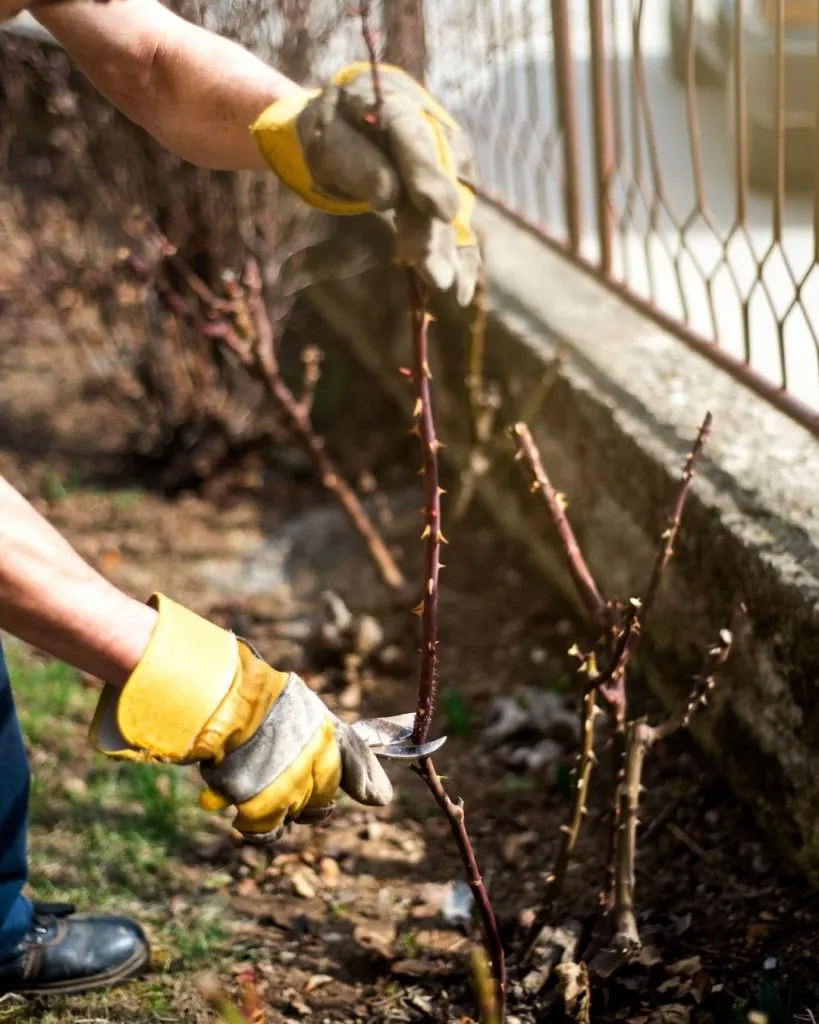
To get a clear view of the structure of your rose bush, the best time to prune is when the plant is bare of leaves.
If it’s spring and your rose has already started growing, don’t worry – you can still remove the leaves by hand before you begin pruning.
Doing so lets you easily identify which parts need trimming. Think of this step as giving your plant a fresh canvas to work with!
2. Cut Away Horizontal Branches
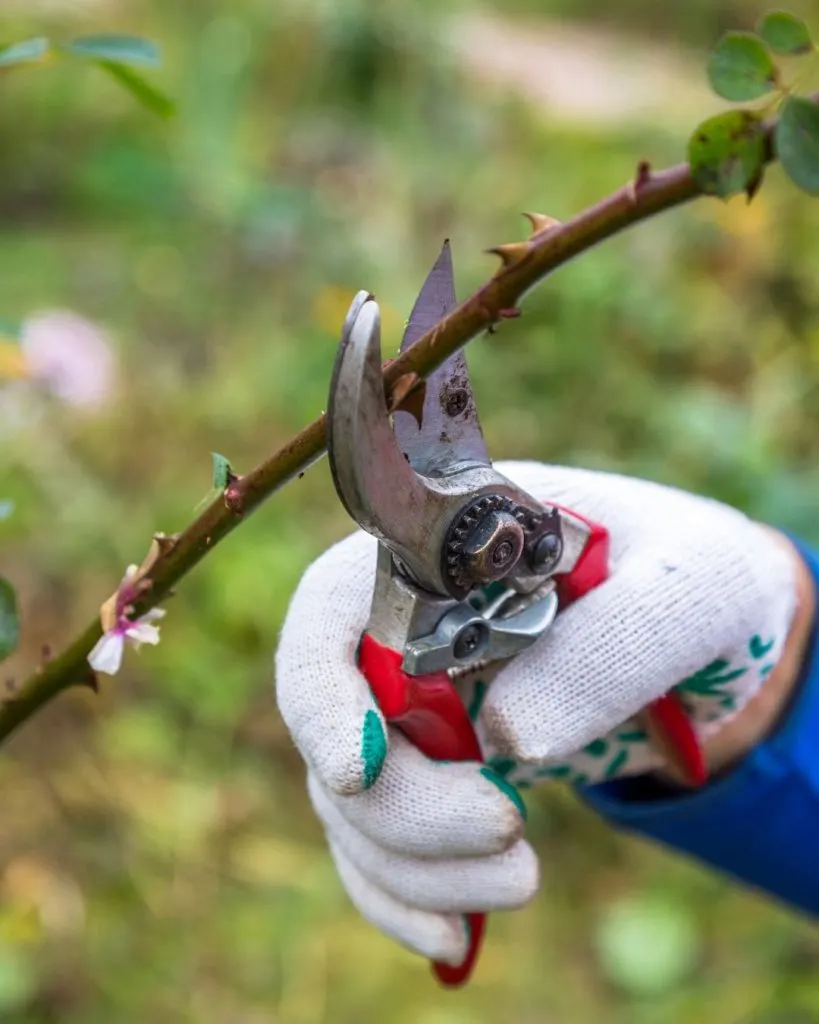
Now that you can see what you’re working with, the next step is to cut away any horizontally growing stems or branches.
These branches tend to crowd the middle of the bush or cross over others, which can lead to tangling or restricted air circulation – neither of which is good for your plant.
Clean these up, and you’ll be setting the stage for your rose bush to grow more openly and healthily.
3. Remove Any Diseased or Dead Wood
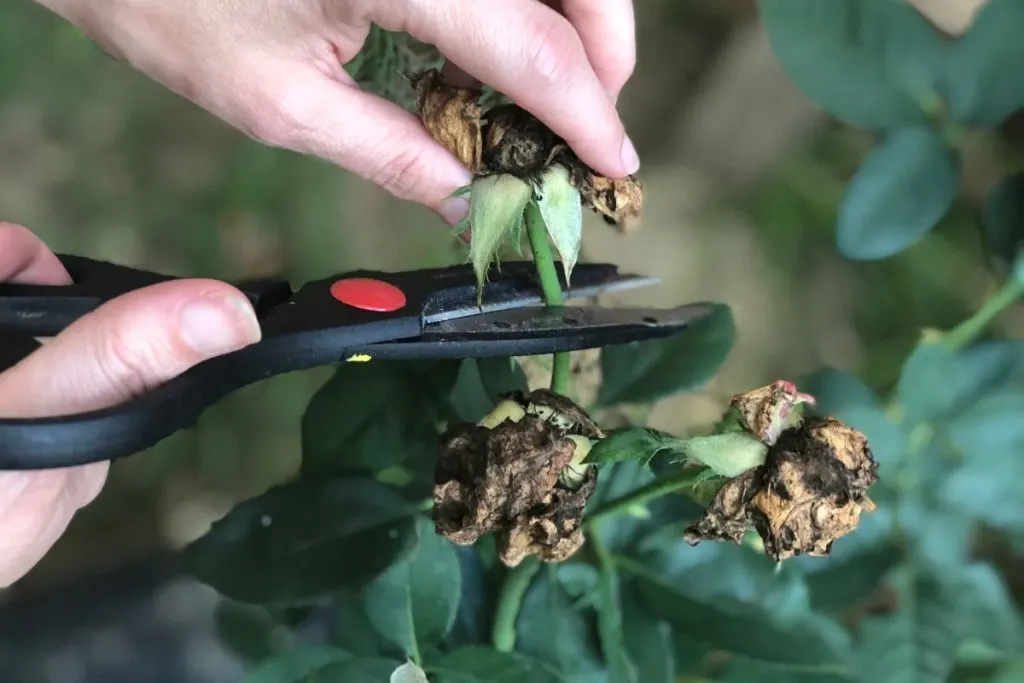
This step is crucial! Diseased or dead branches not only look unsightly but can also harm the health of your entire rose bush. To identify whether a branch is dead, check the inside of the stem.
If it’s brown or black, it’s dead. If it’s green, it’s still alive and kicking! Removing the dead material opens up the center of the bush, improving air circulation and reducing the risk of diseases.
4. Trim Vertical Stems to an Outward-Facing Bud
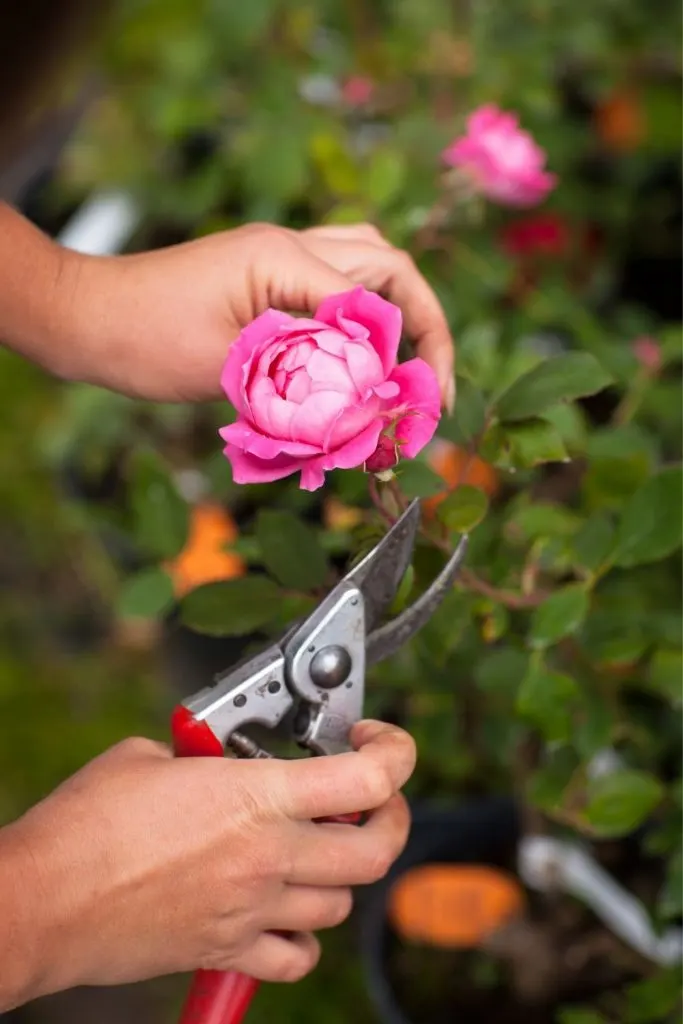
By this stage, you should be left with six to eight strong, healthy vertical stems. These are your plant’s best performers, and they’re the ones that will carry you through to a full blooming season.
Trim each of these stems down to about 18 to 24 inches tall, making your cut just above an outward-facing bud.
Why an outward-facing bud? It encourages the new growth to spread outwards, helping your rose bush maintain an open shape rather than becoming a tangled mess.
Plus, always make sure your cuts are at a 45-degree angle – this helps water run off and prevents rot or disease. A clean, smooth cut is essential, so make sure your pruning shears are sharp!
5. Keep an Eye on Your Roses and Watch Them Flourish!

After pruning, your rose bush is all set to grow stronger and healthier. All you need to do now is sit back and let nature do its thing.
With improved air circulation and well-placed cuts, your roses will reward you with more abundant, vibrant blooms. In the weeks to come, you’ll be amazed at how much difference a bit of strategic pruning can make.
Timing Matters: When to Prune Your Roses
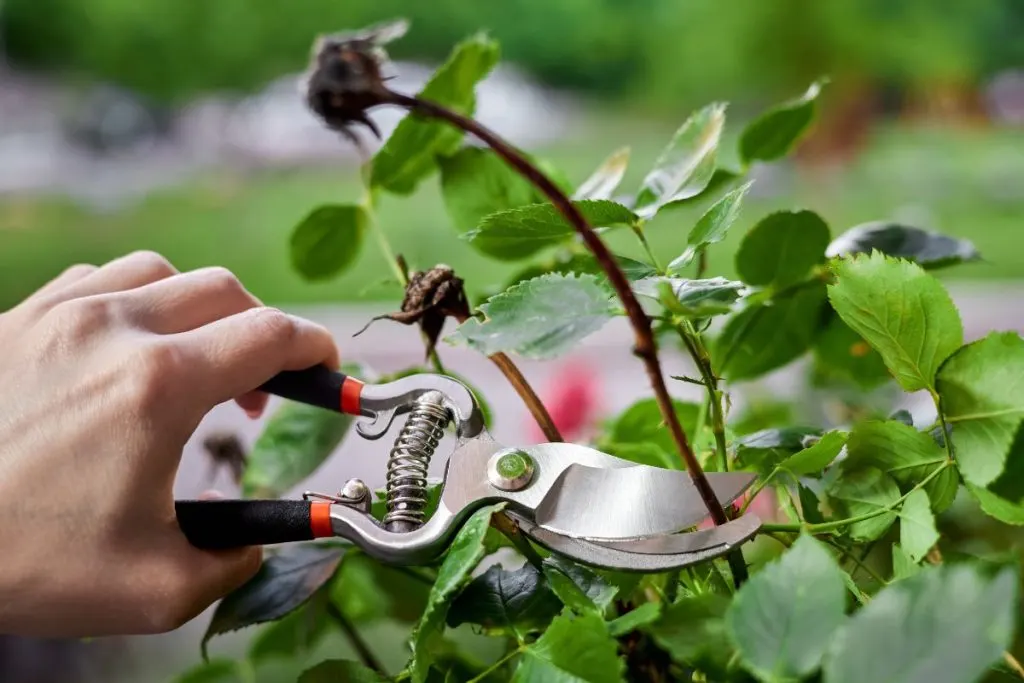
Pruning at the right time is crucial. Generally, it’s best to prune roses in late winter or early spring, right after the last frost but before new growth appears. This timing allows you to shape the plant before it puts too much energy into producing new stems and leaves.
In warmer climates, you may be able to prune roses earlier. Always ensure you’re pruning when the plant is dormant, as this minimizes stress and promotes vigorous growth when the weather warms up.
Tools of the Trade: What You Need to Prune Roses
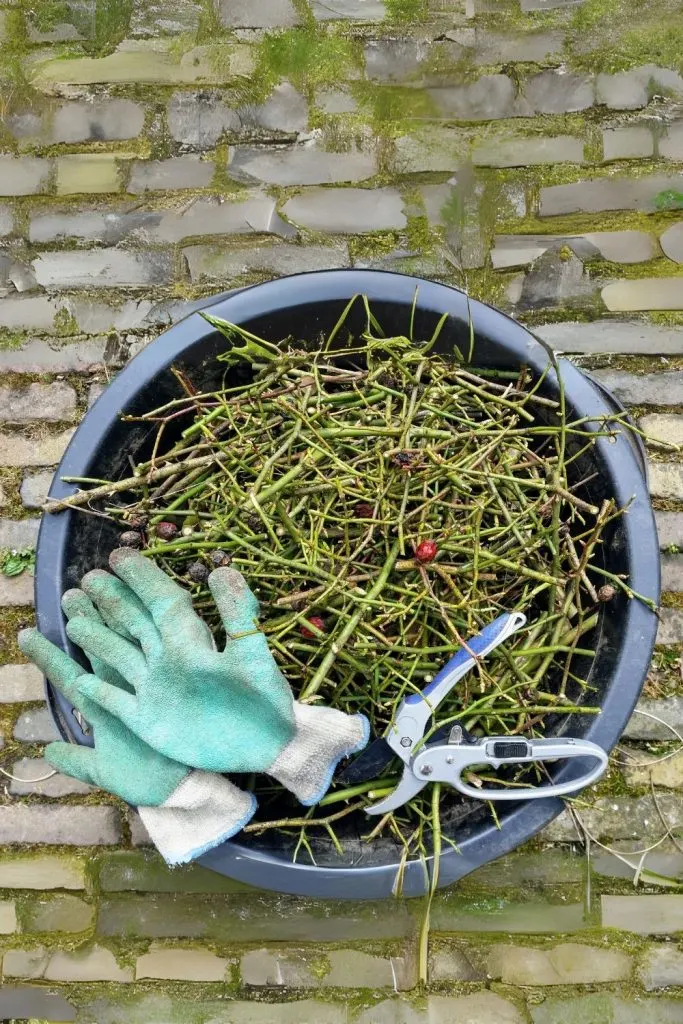
Having the right tools is just as important as knowing the right techniques. Here’s what you’ll need for a smooth pruning session:
• Bypass pruners: Essential for clean cuts on stems and branches. Make sure they’re sharp to prevent damaging the plant.
• Loppers: Useful for cutting thicker branches that pruners can’t handle.
• Gloves: Protect yourself from thorns with sturdy gloves.
• Disinfectant: Clean your tools before and after use to prevent spreading diseases between plants.
Investing in quality tools and maintaining them will make pruning easier and more effective.
Common Pruning Mistakes and How to Avoid Them
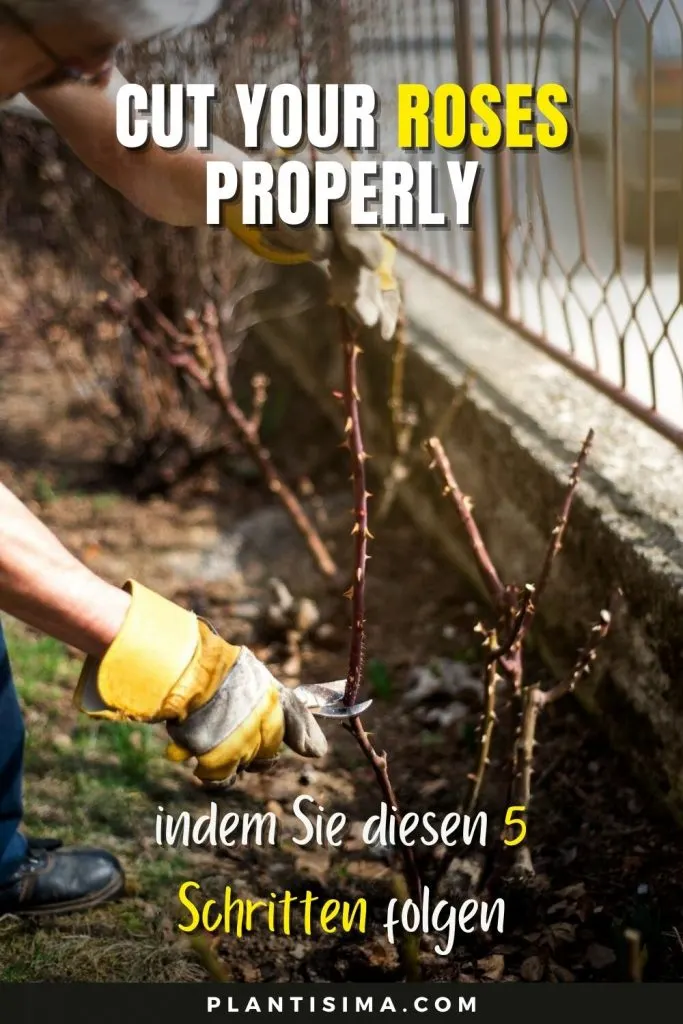
Mistakes happen, especially when you’re new to pruning. Here are some common errors to watch out for and how to avoid them:
• Cutting too close to the bud: Always leave about 1/4 inch above a bud when cutting. Cutting too close can damage the bud, and cutting too far away leaves an unnecessary stem that may die back.
• Not sterilizing tools: Using dirty tools can spread disease. Always sterilize your pruners before starting and between plants to avoid contamination.
• Over-pruning: While pruning is beneficial, cutting too much can shock the plant and reduce flowering. A good rule of thumb is to never remove more than a third of the plant’s overall size in one pruning session.
Avoiding these mistakes will help ensure your rose bush stays healthy and looks its best.

